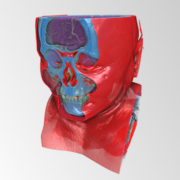Atrial fibrillation (AF) is the most common heart arrhythmia worldwide, leading to life-limiting complications, high financial burden and significant resource utilisation. In Europe, stroke as a debilitating complication of AF, is amongst the commonest causes of death and the leading cause of disability. AF patients have a 5-fold increased risk for ischaemic stroke. Functional recovery from AF-related stroke (AFRS) is often unsatisfactory, leading to severe disability, reduced quality of life and high mortality. TARGET’s ambition is to develop novel personalised, integrated, multi-scale computational models (virtual twins) and decision- support tools for the AF-related stroke pathway, starting from the healthy state, pathophysiology and disease onset, progression, treatment and recovery. TARGET aims to help prevent AF and AFRS, optimise acute management and rehabilitation, reduce long- term disability, provide a better quality of life for patients and caregivers, and lower healthcare costs. We will ensure patients are at the heart of the project, and the association with experienced commercial partners will ensure the swift adoption of TARGET’s novel technologies. New observational data will be collected via 4 carefully designed prospective clinical studies, which will be used to test and validate the personalised tools and the virtual twin models using a clinical trial simulation (virtual/in-silico), to demonstrate evidence of clinically meaningful results. TARGET will also help consolidate existing mechanistic virtual twin models of the heart, the brain and the neuromusculoskeletal system, enriching these twins to deliver more complex tasks, and supporting research to move towards a more integrated human virtual twin. TARGET represents a milestone project to improve the care and rehabilitation of patients with AF and AFRS, introducing a paradigm shift in risk prediction, diagnosis and management of the disease, and accelerating translational research into practice.
Funding
- European Commission
Project Partner
Team
Research Areas
- This research area bridges the gap between visualization and medicine by providing comprehensible visual means to detect diseased regions or to aid clinical treatment decisions.
